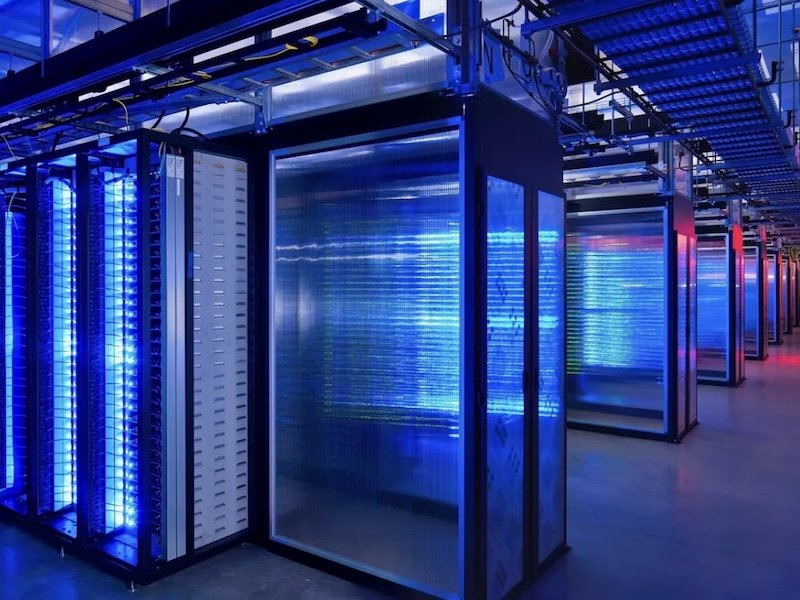AI Could Drive Clean Energy Boom as Investors Question Climate Footprint
October 4, 2024

The coming boom in artificial intelligence represents both a threat and an opportunity for the clean energy transition, market experts suggest.
No longer purely in the realm of the tech sector, AI has in recent years become an energy industry issue, The Canadian Press reports. The expected rapid rollout of the energy-hungry data centres needed to power the AI revolution has captured the attention of everyone from gas drillers to electricity grid operators to renewable energy developers.
- The climate news you need. Subscribe now to our engaging new weekly digest.
- You’ll receive exclusive, never-before-seen-content, distilled and delivered to your inbox every weekend.
- The Weekender: Succinct, solutions-focused, and designed with the discerning reader in mind.
“AI is very, very energy-hungry. Anything you do with AI consumes a lot of power,” Ed Crooks, vice-chair for the Americas at analytics firm Wood Mackenzie, told the Energy Disruptors: Unite conference in Calgary Wednesday.
“If you’re talking about creating an image with AI… that uses about 10,000 times the power of a simple Google search.”
According to the International Energy Agency, the world’s data centres consumed roughly 1.4 to 1.7% of global electricity use in 2022. But the IEA projects data centre energy consumption will double by the end of 2026 as AI workloads become more operationally complex.
In the United States, data centre capacity is expected to double within the next five years, said Crooks. He added Wood Mackenzie foresees North American electricity demand increasing by 50% by 2050, in part due to the rapid rollout of data centres but also because of electric vehicle demand, electrification of home heating, and other trends.
In Canada—where there are already an estimated 239 data centres operating coast to coast, according to figures released Wednesday by the Canada Energy Regulator—utilities are already incorporating expected AI-related demand growth into their forecasting.
Hydro-Québec, for example, anticipates an increase of 4.1 terawatt-hours in electricity demand from data centres between 2023 and 2032. That’s about 2% of the province’s electricity production in 2022.
In many parts of the world, Crooks said the fastest and cheapest way to meet AI’s growing needs for reliable, on-demand electricity is to build new natural gas-fired power plants.
But other analyses disagree, and Crooks said any move to increase dependence on gas would be a big problem when countries need to wean themselves off other fossil fuels to meet global climate targets.
“If in 2050, we are using more natural gas than we’re using now, and if actually demand is still rising, then that has very, very serious implications for the climate,” Crooks said.
Yet many Canadian gas drillers are already expressing optimism about what data centre growth could mean for the future of their industry, which is currently challenged by extremely low commodity prices. Pipeline companies such as Calgary-based Enbridge Inc. and TC Energy Corporation are also eyeing data centre electricity demand as a potential opportunity for revenue growth.
But Crooks said Big Tech is well aware of their industry’s growing electricity needs, and is increasingly choosing to invest directly in its own power infrastructure. Last week, Reuters reported that investors with control over hundreds of billions of dollars are looking for more information on future energy demand for AI and advanced computing before deciding whether tech giants like Microsoft and Alphabet should retain their high status in major sustainability funds.
“If the companies were to loosen current commitments to source renewable energy now and in the future, managers may choose to exclude them from some of the more strictly-defined funds,” the news agency wrote.
“We are waiting for more details about their AI-related power consumption, the volume of their PPAs [power purchase agreements for renewable electricity], the geographic distribution, the duration,” said Jason Qi, senior ESG research analyst for Calvert Research and Management, a division of Morgan Stanley.
“What we will do is make the AI angle a central part of our climate-related engagement with tech companies,” said Eric Pedersen, head of responsible investments at Nordea Asset Management, which has €265 billion (US$399 billion) under management and holds €17 billion in companies like Apple, Amazon, Alphabet, Microsoft, Meta, and Nvidia. “Where we have committed a proportion to sustainable investments in our internal ESG scoring, you might see it becoming harder for those companies to fulfill that.”
Crooks said tech behemoths Amazon, Meta, and Google are already among the biggest corporate buyers of wind and solar energy and have played a key role in the growth of the renewable energy industry. CP reports.
Google is also backing a new geothermal project in Nevada to power some of its data centres with clean electricity, and Microsoft recently signed a 20-year power purchase agreement to support the restart of a nuclear power unit at Three Mile Island in Pennsylvania.
“The fact that AI is consuming so much energy can accelerate the innovation of the technologies required to decarbonize,” said Ana Domingues, who leads energy and resource AI efforts globally for professional services firm EY.
“That’s because we are talking about the companies that have deep pockets.”
Domingues said she is optimistic the growth of AI will prompt large companies to make investments in the clean energy technologies the world needs to meet its climate goals.
But she also warned that building these technologies takes time, and in the interim, AI is poised to place a great deal of pressure on electricity grids around the globe.
“You already have countries—the Netherlands, Germany, the UK—that are facing real congestion problems (on their grids),” Domingues told CP on the sidelines of the Calgary energy conference on Wednesday.
“You will start having more blackouts from severe weather events and from congestion on the grid—that is, the inability to handle so many things plugged into the grid.”
Early last month, analysts at Oslo-based Rystad Energy reported that Germany is on track to exceed its target to produce 80% of its electricity from renewable sources by 2030. The country’s renewable capacity hit 170 gigawatts in 2023, up 12% in just a year, including 81.7 GW of solar and 60.9 GW of wind. Two weeks later, Jennifer Morgan, Germany’s first-ever state secretary and special envoy for international climate action, told media the counry will be looking to Canada for green hydrogen exports, but not so much for natural gas, as the country continues its shift off fossil fuels.
“All studies show that the market is going to shrink,” she said. “Germany will be driving forward on renewables, and gas demand will decline.”
The main body of this report was first published by The Canadian Press on Oct. 2, 2024.
Search
RECENT PRESS RELEASES
Related Post


